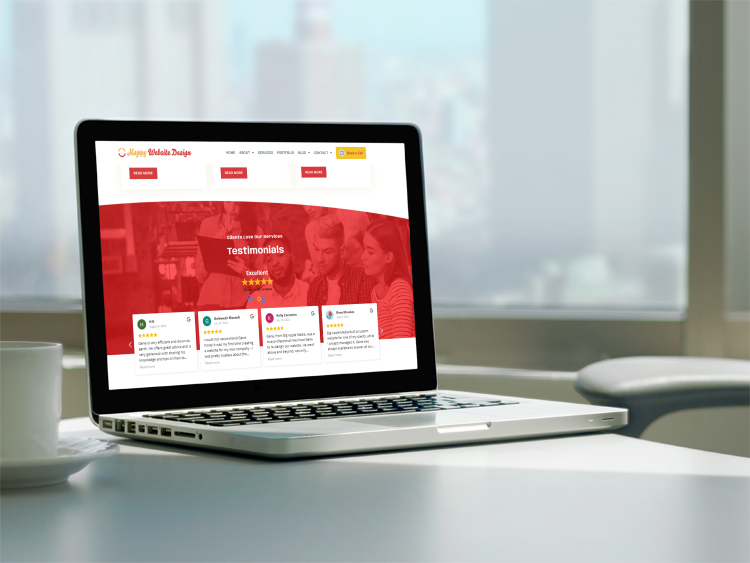Why Holistic Website Design Is the Key to a Smooth User Experience
In today's digital landscape, the relevance of holistic website design can not be overemphasized, as it delicately weaves together looks, usability, and performance to develop a seamless user experience. By taking on a comprehensive approach that prioritizes user needs and leverages feedback, designers can boost the overall interaction with their platforms. This strategic placement not only cultivates greater customer complete satisfaction yet also has far-ranging ramifications for brand name perception and commitment. Nevertheless, the journey to attaining this level of combination includes a number of critical factors to consider that merit additional expedition.
Recognizing All Natural Website Design

Integrating customer comments and behavioral data is necessary in holistic website design. This repetitive process helps designers to determine pain factors and areas for renovation, guaranteeing that the final product reverberates with users. All natural style stresses the importance of availability, making sure that all users, regardless of their abilities, can navigate and engage with the website successfully.
Furthermore, the assimilation of receptive style concepts is important in suiting different devices and screen dimensions, even more boosting the user experience. By recognizing the interconnectedness of these components, developers can create sites that not just attract yet also keep customers, ultimately driving interaction and conversions. Holistic website design is, therefore, a calculated strategy that fosters a significant partnership between customers and electronic spaces, leading the way for lasting online success.
Secret Aspects of Holistic Layout

An additional important aspect is consistency in aesthetic and functional facets throughout the website. This entails preserving a cohesive shade palette, typography, and format, which assists users browse the site intuitively - happy web design. In addition, responsive layout is necessary, guaranteeing that the website executes optimally throughout various tools and screen dimensions
Accessibility is additionally an important element of alternative layout. By adhering to access standards, developers can create inclusive experiences that deal with diverse customer teams, including those with disabilities. Moreover, the integration of material technique guarantees that beneficial details exists plainly and succinctly, enhancing understanding and interaction.
Last but not least, effective partnership among layout, growth, and marketing teams cultivates a unified vision that lines up with business goals. By focusing on these crucial elements, alternative website design can supply an enriching customer experience that is both her comment is here engaging and useful.
Advantages of a Seamless Experience
Creating a seamless customer experience uses many advantages that significantly boost general fulfillment and interaction. At its core, a seamless experience cultivates a sense of simplicity and intuition, allowing customers to navigate a web site or application easily. This decrease in rubbing not only boosts the probability of customers returning however additionally boosts their willingness to recommend the system to others.
Furthermore, a seamless experience results in enhanced conversion rates. When individuals discover what helpful resources they require with marginal initiative, they are extra inclined to finish desired actions, such as making a purchase or enrolling in an e-newsletter. This effectiveness translates right into greater client retention, as completely satisfied customers are most likely to become dedicated advocates for the brand.
In addition, a natural and smooth interface reduces cognitive load, permitting users to concentrate on content instead of fighting with navigation or style inconsistencies. This clarity not just enhances customer contentment however additionally strengthens brand reliability. Eventually, prioritizing a seamless user experience causes an affordable benefit, as organizations that buy this facet are better positioned to satisfy the advancing expectations of their target market and drive long-term success.
Executing Holistic Strategies
To achieve a really smooth individual experience, companies should take on alternative approaches that consider every element of layout and performance. This strategy begins with a combined vision that aligns staff member across numerous techniques, including click site UX/UI layout, content growth, and technical execution. Effective partnership promotes a common understanding of customer needs and objectives, enabling for even more systematic design choices.
Next, it is critical to develop user personalities and journey maps that show the varied demographics and habits of the target market. By feeling sorry for customers' perspectives, companies can expect challenges and streamline interactions throughout the electronic experience.

Additionally, constant branding and messaging need to penetrate every touchpoint, making sure an identifiable and credible existence that boosts individual engagement. Integrating receptive style concepts is likewise essential, as customers currently engage with material throughout numerous devices.
Furthermore, companies need to prioritize accessibility, ensuring that all individuals, no matter of capability, can browse and take advantage of their digital offerings. By embedding these alternative methods into the layout procedure, organizations can develop a natural and satisfying individual experience that advertises complete satisfaction and commitment.
Determining Individual Experience Success
While achieving an alternative approach to website design is necessary, determining customer experience success is similarly essential to ensure that style techniques effectively meet individual demands. This needs a combination of qualitative and measurable metrics to acquire a comprehensive understanding of individual communications and satisfaction degrees.
Key performance signs (KPIs) such as customer interaction, conversion prices, and bounce rates offer valuable measurable understandings. A high conversion rate may suggest that individuals locate the design intuitive and compelling. On the other hand, raised bounce rates can indicate that users are disappointed or confused, requiring a reevaluation of the layout aspects.
Qualitative procedures, consisting of customer comments, studies, and usability screening, are vital for getting much deeper understandings right into the user experience. Assessing user comments can reveal pain points and areas for renovation, while usability tests allow designers to observe real-time communications and determine obstacles customers deal with.
Eventually, the combination of these measurement techniques permits continual refinement of internet design, guaranteeing it continues to be user-centered and effective in supplying a seamless experience (happy web design). Routinely revisiting these metrics will allow designers to adjust to evolving user demands and choices, strengthening the overall success of an alternative web layout approach
Conclusion
In final thought, all natural web design emerges as an essential method to attaining a smooth individual experience. By integrating aesthetic appeals, capability, and usability, this layout philosophy addresses diverse customer demands and choices.